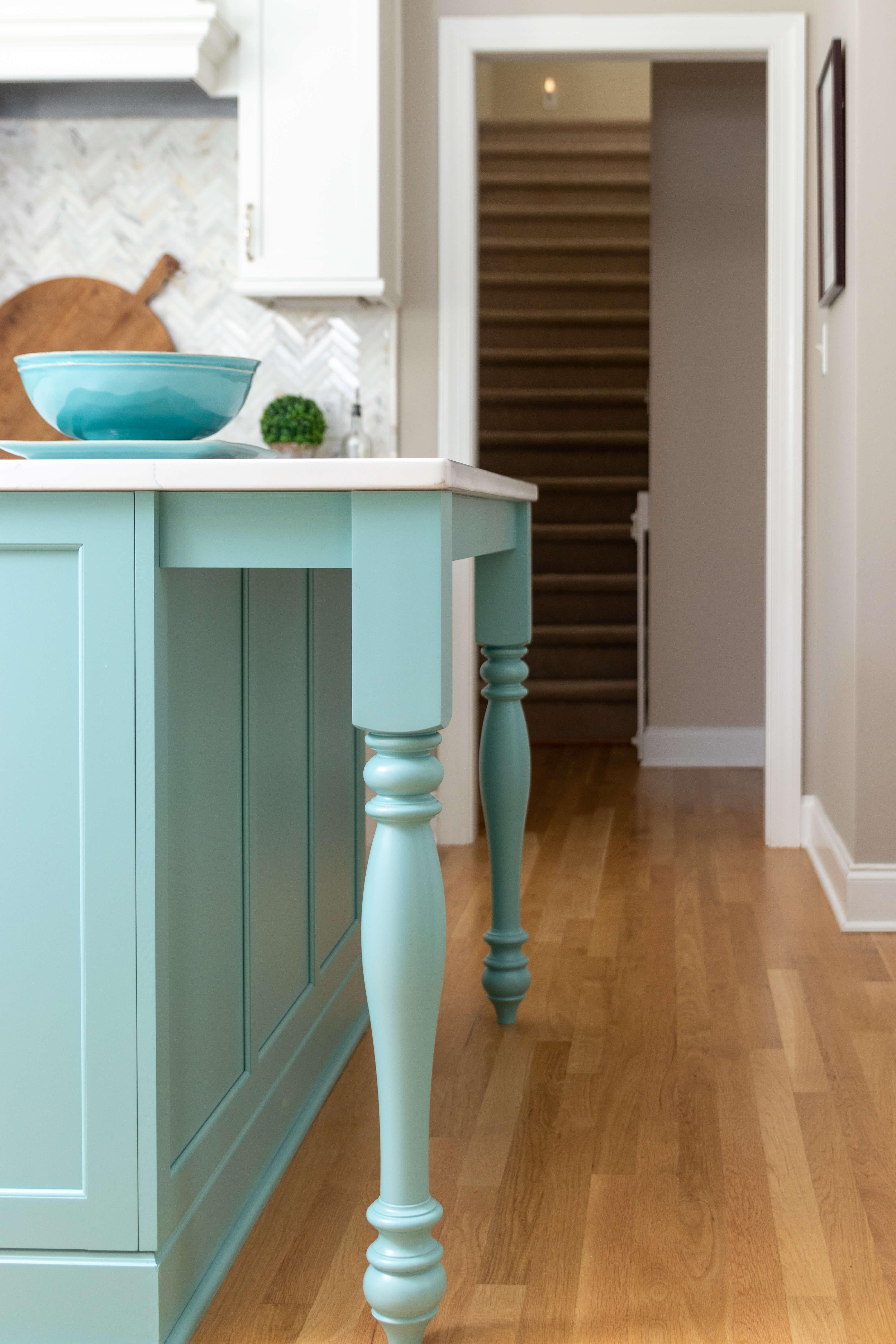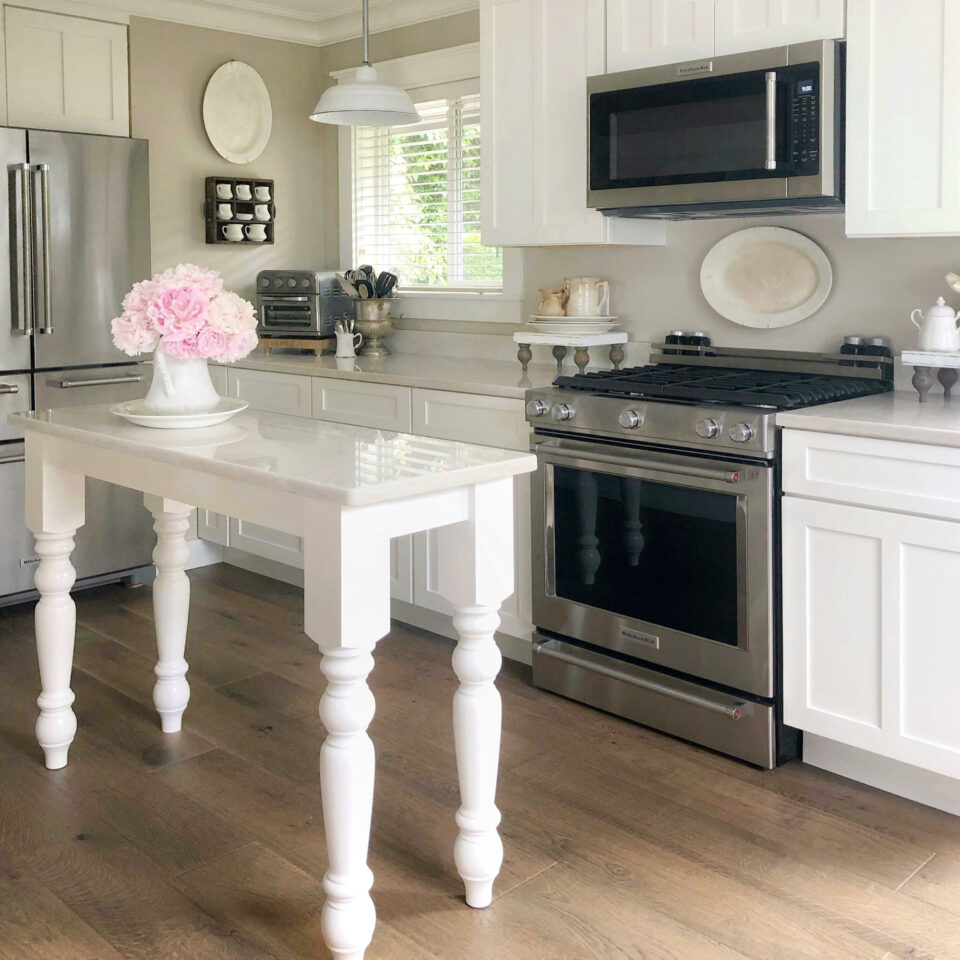Transform Your Kitchen with Gorgeous Kitchen Island Legs
Transform Your Kitchen with Gorgeous Kitchen Island Legs
Blog Article
Essential Tips for Picking the Perfect Table for Your Kitchen
Selecting the excellent dining table for your kitchen is greater than simply a matter of taste; it demands a comprehensive understanding of your area and requirements. Begin by measuring your offered area to guarantee sufficient clearance for movement. The shape of the table plays a critical function; while rectangle-shaped tables match bigger areas, rounded ones foster affection, and extendable alternatives supply versatility. Product selection is just as crucial, with hardwoods providing durability and glass financing a modern-day touch. The table ought to balance with your cooking area's visual appeals and accommodate your household easily. What other factors might affect this important choice?
Measure Your Room
Picking the suitable table starts with a precise analysis of your offered space. This foundational step makes certain that the table not just fits pleasantly within the area yet likewise enhances the overall layout and performance of your dining area. Begin by measuring the measurements of the space, taking into account doorways, windows, and any kind of existing furniture. This will help you determine the maximum permitted size for your table.
It is crucial to leave sufficient space for chairs to be pulled out and for people to move around the table without obstruction. A general rule of thumb is to enable at least 36 inches of clearance from the side of the table to the closest wall or item of furniture.
Additionally, consider the variety of people you generally delight and whether you need added space for guests. Choosing an extendable table can give versatility, allowing you to suit differing varieties of restaurants. By accurately gauging your space, you lay the foundation for choosing a dining table that enhances both the aesthetics and performance of your dining location.
Pick the Right Shape

On the various other hand, round tables are outstanding for smaller kitchen areas or intimate gatherings, as they promote conversation by permitting everyone to encounter each other. They additionally supply a sense of comfort and can fit well in tighter spaces as a result of their absence of sharp edges. Oval tables supply the very best of both worlds, combining the length of rectangle-shaped tables with the affection of rounded ones, making them flexible for various setups.
Square tables are an additional alternative, especially fit for square-shaped areas. They produce a modern and balanced appearance, promoting an equal dining experience for all seated.
Material Factors To Consider
When selecting a dining table, material factors to consider are extremely important in determining the table's toughness, upkeep needs, and general visual. Timber is a classic option, supplying classic allure and toughness.
Glass-topped tables provide a modern-day, smooth look and can make a room appear larger because of their openness. They call for constant cleansing to protect against spots and fingerprints. Furthermore, toughened up glass is advised for its extra strength and safety and security.

Finally, composite materials like MDF (Medium-Density Fiber board) or plywood are economical alternatives. These products can mimic the look of solid wood but may not provide the exact same long life. They are typically less complicated to tidy but can be vulnerable to water damage if not correctly secured.
Ultimately, the option of product should align with your kitchen area's style, your way of life requires, and your spending plan constraints. (kitchen island legs)
Seating Ability and Comfort
Just how do you determine the right seating capacity and convenience for your table? This important action includes evaluating both the physical room offered in your kitchen area and your family's practical demands. Begin by measuring your kitchen location to make sure the table fits comfortably, enabling at the very least 36 inches of clearance around it for simple motion. Consider the variety of people that commonly eat together, as this will influence the table size. For a household of four, a rectangle-shaped table of 48 inches long or a round table with a 48-inch diameter is normally adequate.
Comfort is just as crucial. The elevation of the table should ideally be around 30 inches, providing a well balanced ergonomic stance for seated diners. Chairs need to have a seat elevation of 18 to 20 inches to make sure a comfy eating pose. In addition, take into consideration the chair style; upholstered seats and encouraging back-rests can enhance dining convenience considerably, especially during prolonged meals.
Design and Aesthetic Appeal
Selecting a table that suits your design and visual appeal involves balancing personal preference with the existing design of your eating area. The eating table is usually the focal point of the kitchen area, and its design must complement the general style of the space. Whether your cooking area a knockout post boasts a contemporary, minimal look or a rustic, farmhouse appeal, the table you pick must harmonize with these aspects to develop a natural and inviting ambience.
Take into consideration products carefully; wood supplies a timeless appeal and can vary from abundant mahogany for a traditional want to lighter oak for a contemporary feeling. Steel and glass tables, on the other look here hand, can introduce a smooth, industrial side to your kitchen area. Do not ignore the table's form-- rectangle-shaped tables are timeless and versatile, while round and oval alternatives can foster an extra intimate dining experience.
In addition, pay close interest to surfaces and information. A troubled coating could add personality and heat, whereas a shiny surface area can add to a tidy, contemporary aesthetic. Ultimately, your table need to not just healthy seamlessly right into your cooking area's style yet additionally show your individual design, raising the area both functionally and aesthetically.
Conclusion
Finally, picking the perfect table for a cooking area demands careful evaluation of space, shape, material, seating capacity, and visual consistency. Guaranteeing a minimal clearance of 36 inches promotes comfy activity, while the selection of form enhances spatial characteristics. Product option effects sturdiness and style, making it essential to line up with the kitchen's total aesthetic. Eventually, a well-chosen eating table fosters an inviting environment and accommodates the household conveniently, therefore boosting the dining experience.

When picking an eating table, material factors to consider are critical in determining the table's sturdiness, maintenance needs, and total aesthetic. For a family members of four, a useful source rectangle-shaped table of 48 inches long or a round table with a 48-inch size is usually enough.
Don't neglect the table's shape-- rectangle-shaped tables are timeless and functional, while round and oblong alternatives can cultivate a more intimate eating experience. kitchen island legs.
Report this page